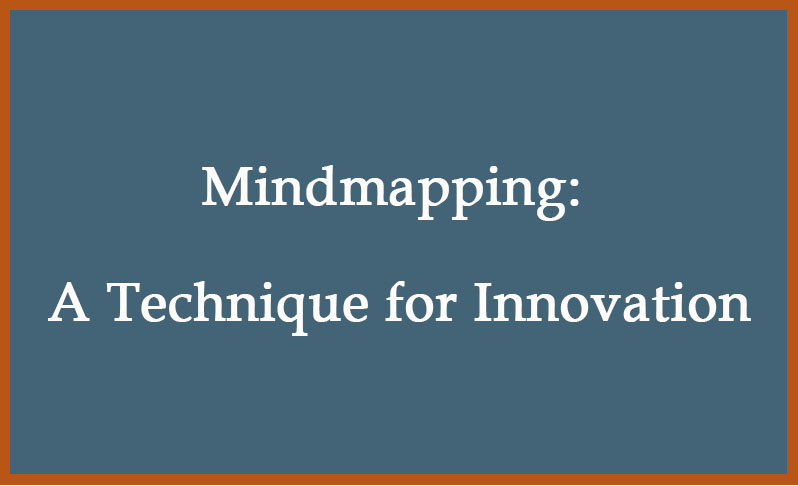In the aftermath of our publishing novels, short stories, and academic books and articles, the three of us continue to be asked the same question: where do you guys get your ideas? Gather round, for this time we’re going to reveal one of our secrets, and this strategy for innovation is one you won’t find in our Introduction to Applied Creative Thinking (New Forums, 2012).
In short, mindmapping is a multipurpose tool, a metacognitive Leatherman for faculty and students.
The Mind Map Definition
The Mind Map, a term invented by Tony Buzan in The Mind Map Book (1993), “is a powerful graphic technique which provides a universal key to unlocking the potential of the brain” (p. 9). For that reason, Buzan’s subtitle is How to Use Radiant Thinking to Maximize Your Brain’s Untapped Potential. A mindmap provides a way for organizing ideas either as they emerge or after the fact. Perhaps the mindmap’s greatest strength lies in its appeal to the visual sense.
Recommended Reading: It Works for Me, Metacognitively
Scientific Rationale
Essentially, a mindmap begins with what Gerry Nosich in Learning to Think Things Through (2009) calls a fundamental and powerful concept, “one that can be used to explain or think out a huge body of questions, problems, information, and situations” (p. 105). To create a mindmap, place the fundamental and powerful concept FPC) you wish to explore in the center of a piece of paper and circle it. If at all possible, do something with color or the actual lettering in order to make the FPC even more visual. For instance, if you were to map the major strategies involved in metacognition, metacognition is the FPC, and you might choose to write it as such:
META Cognition Strategies
Why the emphasis on the visual aspects of the word(s)? In Brain Rules (2008) molecular biologist John Medina explains a pervasive psychological phenomenon known as the pictorial superiority effect (PSE): “Text and oral presentations are not just less efficient than pictures for retaining certain types of information; they are way less efficient. If information is presented orally, people remember about 10%, tested 72 hours after exposure. That figure goes up to 65% if you add a picture” (p. 234). In sum, since pictures increase retention of information six-seven times, you can understand why Medina’s Brain Rule #8 is “Vision trumps all other senses” (p. 240).
Increasing the visual effect of the FPC are lines that run to items that support the FPC to additional circled concepts. These Sputnik-like appendages are what Buzan calls basic ordering ideas, “key concepts within which a host of other concepts can be organized” (p. 84). For example, if you were working with our metacognition example, your lines might radiate out to a host of also-circled metacognitive strategies, such as retrieving, reflection, exam wrappers, growth mindset, and the EIAG (for an explanation see our It Works for Me, Metacognitively (2016, pp. 33-34). And if you wanted to go one step further, you might radiate lines from, for instance, retrieving, to actual retrieving strategies (e.g., flashcards, interleaving, self-quizzing).
Uses for Mindmaps
Why in paragraph two did we refer to mindmapping as “a metacognitive Leatherman? Like the multipurpose tool, mindmapping has many uses:
- Decision-making: can you figure out which way to go? Create a mindmap of the possibilities.
- Brainstorming: we use the strategy for plotting novels as well as academic books. In fact, we started our upcoming Scaling the Scholarship Mountain by mindmapping the various directions we wanted to go.
- Note-taking: Mindmapping provides an alternative form of notetaking whether for students or professors trapped in committee meetings.
- Studying: Instead of rereading notes taken, try reorganizing them into a mindmap or two. Mindmapping not only offers the visual alternative here, but provides retrieval practice.
- Assessment Technique: instead of giving a traditional quiz or test, ask students to produce a mindmap. This alternative experiment will demonstrate to students a different approach to learning material and give you a solid read on their grasp of the material.
- Prioritizing: when items are placed in a mindmap, something has to occupy center stage. In essence, you find yourself “Nosiching,” or finding the fundamental and powerful concept.
Conclusion
Mindmaps are easy, fun, and produce a learning experience. Don’t believe it. Stop reading now, take out a piece of paper, and mindmap what you just read. We’re willing to bet that if you do so, the material will stay with you for a long time.
Author
 Charlie Sweet is currently Co-Director of the Teaching & Learning Center (2007+) at Eastern Kentucky University. Before going over to the dark side of administration, for 37 years he taught American Lit and Creative Writing in EKU’s Department of English & Theatre, where he also served as chair (2003-2006). Collabo-writing with Hal Blythe, he has published well over 1000 items, including 15 books; of his 11 books with New Forums. Meet Charlie.
Charlie Sweet is currently Co-Director of the Teaching & Learning Center (2007+) at Eastern Kentucky University. Before going over to the dark side of administration, for 37 years he taught American Lit and Creative Writing in EKU’s Department of English & Theatre, where he also served as chair (2003-2006). Collabo-writing with Hal Blythe, he has published well over 1000 items, including 15 books; of his 11 books with New Forums. Meet Charlie.



